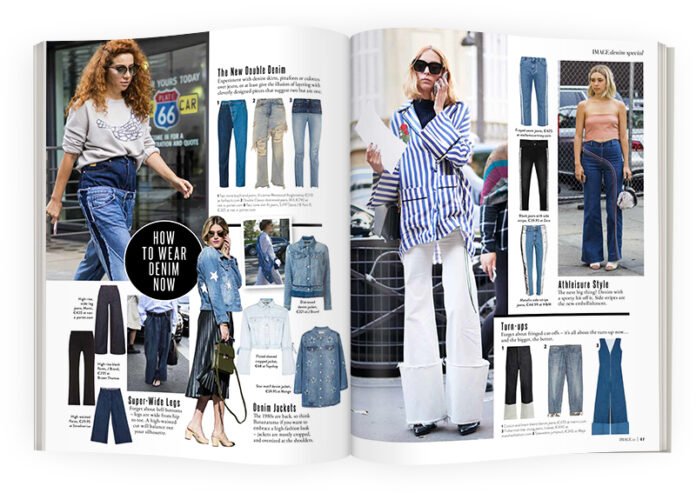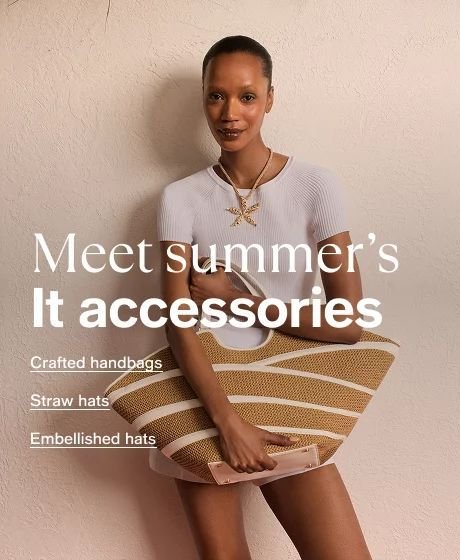Fashion-lovers rejoice! The growing trend of luxury fashion brands embracing diversity and inclusivity is a cause for celebration. Whether you’re looking for the latest styles for a night out or timeless pieces for a more formal affair, there’s now something out there that can match your unique individual sense of style. From bigger sizes to diverse models, luxury fashion is making room for everyone.
1. The Increasing Need for More Diverse Representation in the Luxury Fashion Space
In recent years, the luxury fashion world has been experiencing a growing push for greater diversity across numerous levels. From exploding niche markets aimed at plus size or genderless offerings to the ongoing campaigns for racial inclusivity, there is a definitive need for an increased presence of minority perspectives in the luxury space.
Unique Perspectives:
The luxury fashion world has a long history of highlighting sparse representations of racial minorities and, until recently, there was little to no room for people of color to make their influence felt. This was heavily due to a lack of investment in understanding how culture and identity can inform a sense of style, the creation of a market where these identities could be expressed and, more broadly, how to address the institutionalized barriers that face those seeking to participate in luxury settings. With the growing recognition of the lack of diverse figures in the industry, steps are being taken to educate and prepare members of marginalized and underrepresented communities for the power of luxury fashion.
Carefully Curated Offerings:
One of the major factors in the increasing representation of minorities in the luxury market is the development of unique offerings that have been carefully crafted to serve specific communities. Rather than replicating the same looks for all consumers, brands have recognized that certain items, styles and initiatives have unique power when it comes to resonating a sense of inclusion and belonging. Whether it be evening wear specifically designed to address the needs of plus-size fashionistas or makeup collections aimed at highlighting the beauty of different ethnicities, these are just some of the ways that luxury is pushing the boundaries of representation.
Bringing Accessibility to Luxury:
Having greater representation of marginalized and underrepresented groups in the luxury market is only part of the equation. For sustainable change to occur, there needs to be the right kind of investment to ensure accessibility. That means not only providing more resources to support diverse initiatives but also advocating for the consumer protections that can make shopping for luxury products a more equitable experience.
An important aspect of developing an inclusive luxury market includes finding ways to make it accessible to those who may not have the same means or resources to participate. Brands need to recognize the importance of bridging the gap between intrinsic value and pricing. This can be in the form of creating rental services, offering more payment options or engaging in community initiatives. All of these steps can help bring luxury access to a wider customer base.
The Luxury of Inclusivity:
The fashion industry ca no longer ignore the demands for inclusivity. Today’s luxury customer is driven by a desire to find items that speak uniquely to their individual circumstances and beliefs. As brands continue to look for revolutionary ways to bring attention to traditionally overlooked viewpoints, there is no doubt that diversity will become an increasingly important part of the luxury equation.
2. The Pioneering Brands Embracing Diversity and Inclusivity
From L’Oreal to M.A.C. Cosmetics, some of the world’s leading beauty brands have begun embracing diversity and inclusivity like never before. The trend has both revolutionized the beauty industry and set lofty goals for others to follow.
L’Oreal was the first to set a precedent for inclusivity within the beauty industry. From signing its first transgender spokesperson to hiring male makeup artist, the brand is actively celebrating diversity both within its staff and in its campaigns. As the world’s largest cosmetics company, L’Oreal has been applauded for taking such concrete steps in support of a new era in cosmetics.
M·A·C Cosmetics: One of the pioneers of the trend, M·A·C is actively changing the beauty industry by offering inclusivity in all layers of its production. From developing an entirely new line of makeup specifically created for women of color to publishing “Facing the Future” – a book documenting the transformative power of makeup – the brand is proving its commitment to redefining beauty standards.
Fenty: Founded in 2017, Fenty Beauty has broken records for having one of the widest ranges of shades available. Over 40 shades catering to many under and over-represented skin tones catapult Fenty to the forefront of inclusivity. Seemingly overnight, Fenty has revolutionized the cosmetics industry with its range and technological advances for formulating makeup designed specifically for each unique skin tone.
Olay: Olay jumped on the bandwagon in 2018 with their campaign “Face Anything.” Their collaboration with tennis star, professional model, and all-around symbol of Fearless Beauty, Serena Williams, was pivotal. This move signified to the world that diversity and inclusivity were no longer the exception but rather the norm in the beauty industry.
These pioneering brands have set a standard for the beauty industry to follow. From high-end luxury brands to drugstore lables and every company in between, brands are making diversity and inclusivity something to strive for. Not just as a way to garner good press, but also as a way to exhibit the values of a brand.
3. The Benefits to Customers of Increased Representation in Luxury Fashion
Luxury fashion is becoming increasingly accessible, thanks to improved representation in the industry. Increased representation has a range of benefits for customers, offering more choice, less bias, and greater comfort when shopping.
Choice of Aesthetics - One of the primary benefits of increased representation in luxury fashion is the additional choice in aesthetics that customers have available. Luxury fashion brands have become more exposed to different cultures, styles, and preferences, leading to a wider range of fashionable clothing. Customers can enjoy a plethora of new and exciting options for their wardrobe, allowing them to look unique.
Inclusivity and Confidence – Increased representation of minority and disadvantaged cultures allows customers to express their individuality. By feeling included and accepted, customers can shop with greater confidence and enjoy a better shopping experience.
Body Type/Size Diversity – Luxury fashion is no longer locked to certain body types and sizes. With increased representation, luxury fashion brands are working hard to meet the fashion needs of all types of customers. They are releasing clothing lines suitable for smaller, petite customers and larger, plus-size customers.
Less Bias – Increased representation in the industry means there is less bias and prejudice in the fashion industry, giving customers a more pleasant, fair shopping experience. Customers can relax when shopping for luxury fashion, knowing they will not be judged or discriminated against.
Comfort and Security – Finally, increased representation in luxury fashion gives customers greater comfort and security when shopping. Customers can be sure that the fashion brands they are buying from are ethical, and they can trust that their fashion choices will be respected.
4. The Ongoing Challenges of Achieving True Inclusivity in Luxury Fashion
The divide between luxury fashion and inclusivity has existed for a long time. But in recent years, the need to bridge the gap has been growing louder, and more designers are trying their best to bridge it. Despite this, there are still plenty of ongoing challenges when it comes to achieving true inclusivity in the luxury fashion industry.
1. Shortage of Diverse Talent
One of the biggest challenges is the lack of diverse talent in the industry. While there have been initiatives to help bring in more people from different backgrounds, it is not uncommon to find that fashion companies are missing out on valuable opportunities to develop a truly diverse workforce.
2. Financial Implications
The cost of creating garments with a diversity of sizes and shapes is much higher than the price of standard sizes. Consequently, the cost of production must be significantly higher, which has a direct financial impact for fashion companies. Moreover, the additional cost may be prohibitive for some luxury fashion brands.
3. Lack of Accessibility
Another challenge is the lack of accessible ways for consumers to buy luxury fashion. Without access to brick-and-mortar stores or even online shopping, many potential consumers are completely shut out from the buying process. This leaves only few opportunities for customers to access luxury fashion, which limits the potential for true inclusivity.
4. Cultural Views
Additionally, there is a large cultural component when it comes to inclusivity in the fashion industry. There are often accepted standards of beauty or clothing styles that belong to a certain culture or subculture. While it is desirable to promote inclusivity, it can be difficult to overcome the prevailing attitudes towards clothing and fashion.
5. Limited Resources
Finally, there is a lack of resources to help fashion companies become more inclusive. There is still a need for more data, information, and research to help designers create products that can be enjoyed by everyone. Without these resources, fashion companies will struggle to bridge the divide between luxury and inclusivity.
5. How this Trend is Poised to Impact the Industry in the Future
As we move into the future, we can expect to see the medical device industry continue to grow and evolve in the same way. As the technology for medical device manufacturing and development advances, so will the capabilities of medical devices. As medical devices become more efficient, small, and powerful, they will be able to do things that they previously could not. This could be anything from performing complex medical procedures without the assistance of a surgeon, to allowing for remote diagnosis and monitoring of patients.
In the future, medical device companies will be able to create products that are more precise, more reliable, and more cost-effective. This means that more people will be able to access the latest medical technology, which can help to reduce medical costs for everyone. Furthermore, advances in medical device technology could also lead to the development of new medical treatments and procedures that can provide better results for less money.
The use of artificial intelligence (AI) and machine learning (ML) will also have a major influence on how medical devices are developed and used in the future. AI and ML can be used to create sophisticated models to analyze data and provide better patient outcomes. For example, AI and ML could be used to identify patients who are at a higher risk of certain diseases or conditions, allowing medical teams to more quickly intervene and take action on those cases.
In addition, advances in medical device technology will also have a positive impact on the way healthcare is delivered. IoT-enabled medical devices will be able to provide real-time information to healthcare providers, allowing them to make faster and more accurate decisions regarding patient care. This could help to reduce medical errors, improve patient safety, and potentially reduce the amount of time needed for medical treatments.
Finally, the rise in medical device technology will increase opportunities for companies to expand into new markets. By offering products that are more accurate and efficient, medical device companies can carve out a larger share of the global healthcare market. This could ultimately help to reduce costs and make medical care more accessible to people around the world.
At a time when clamor for more inclusivity and diversity is rapidly growing, there is no denying that the fashion industry is leading the charge. With luxury fashion brands becoming more open and embracing of diverse sizes, colors, and age groups, it is increasingly clear that all of us have a place in the fashion of the future. Everyone, regardless of their background, can look forward to embarking on an inclusive, fashionable journey that speaks volumes of their own uniqueness.




